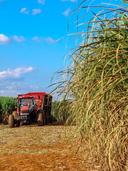Ahead of His Time

September 16, 2014
BY Holly Jessen
Advertisement
Advertisement
Related Stories
The USDA currently predicts corn use in ethanol for the 2025-’26 marketing year to be unchanged when compared to the 2024-’25 marketing year, according to forecasts included in the agency’s latest WASDE report, released May 12.
Scientists at Washington State University have found a new way to produce sugar from corn stalks and other crop waste, potentially opening a new pathway to sustainable biofuels. The experimental process used ammonium sulfite-based alkali salts.
According to a new economic contribution study released by the Iowa Renewable Fuels Association on May 6, Iowa biofuels production has begun to reflect stagnant corn demand throughout the agriculture economy.
UNICA, the Brazilian sugarcane industry association, has released data showing sugarcane processing was up slightly during the first half of April. Total ethanol production was up nearly 12%, and corn ethanol production was up more than 41%.
Sac Economic & Tourism Development Ltd., Ecostrat and the BDO Zone Initiative have issued an investment grade BDO Zone ‘A’ Rating for Sac County, Iowa. The BDO Zone is rated for 824,000 bone-dry tons per year of corn stover.





